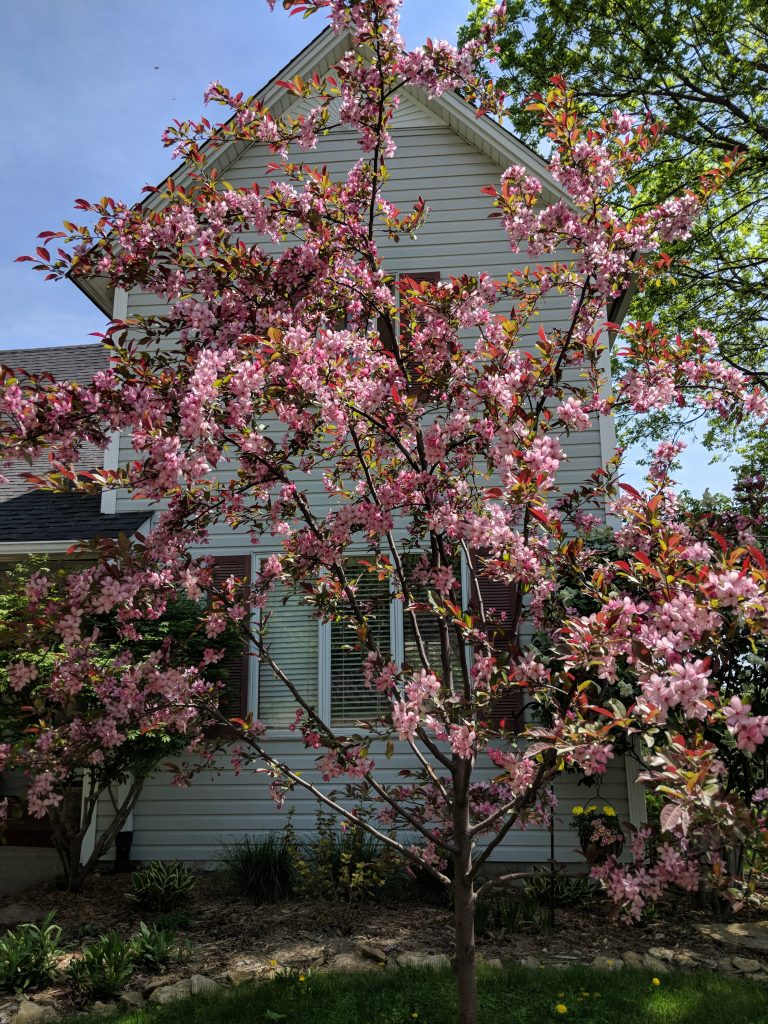Click below to listen to my 2 min. Garden Bite radio show: Transplanting trees
This is the 2nd best time of year to transplant trees. Once the leaves start to drop, you can safely move it. Keep in mind, if your tree is larger than 2 inches in diameter, you may want to get a professional to do it.
For you do-it-yourselfers, first thing to do is loosely tie the lower branches to prevent damage and keep them out of your way as you dig a trench around the tree slightly larger than the rootball you want. Depending on the diameter of your tree, you’ll dig a different size rootball.

Using a sharp spade, undercut the rootball. Use hand pruners and loppers for large or tough roots. Slide a piece of burlap, canvas or tarp under the rootball and with the help of some good friends with strong backs, lift your tree out of the hole and slide it to your other prepared site.

Personally I use tarps, they slide better, I also use them when digging a hole to pile the dirt on, keeps the lawn cleaner and it’s easier to move around the yard. Make sure the hole your transplanting your tree to is about twice as wide but only as deep as the rootball.
 Set your tree in its spot, cut away or slide the trap out, then backfill with the soil, water well and mulch. Add about 2 inches of wood chips or any organic matter. Keep it watered well till the ground has frozen then add more mulch to a depth of 6 inches.
Set your tree in its spot, cut away or slide the trap out, then backfill with the soil, water well and mulch. Add about 2 inches of wood chips or any organic matter. Keep it watered well till the ground has frozen then add more mulch to a depth of 6 inches.
It’s a good time to plant trees and shrubs. Most nurseries have great sales going on right now but that’s not the only reason to plant trees and shrubs. The soil is still warm but the air has cooled off making transplanting of larger perennials a lot easier on them.

I took out a Bur Oak that was planted too close to my home and replaced it with a crabapple.

Be brutal in pruning those roots. Leif uses a utility knife and slides it down the sides of the root ball about every inch or two making sure there are no roots winding around the root ball. Another point is that you can flair roots out as well. If a tree or shrub starts out with circling or girdling roots, you might as well kiss it goodbye now.
To plant properly, take a look at this video with tree expert, Leif Knecht from Knecht’s Nursery and Landscaping. This was from my show Dig In Minnesota – 2013

